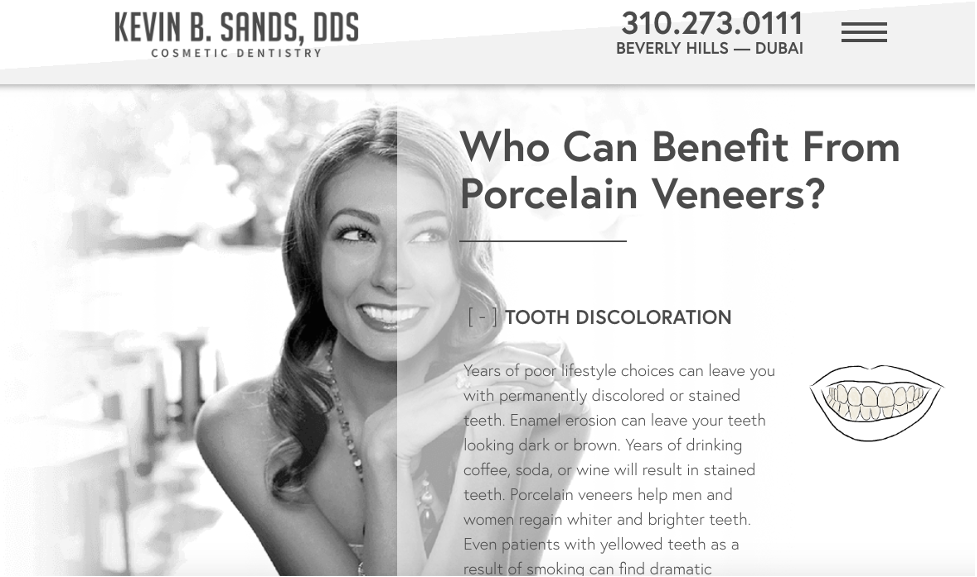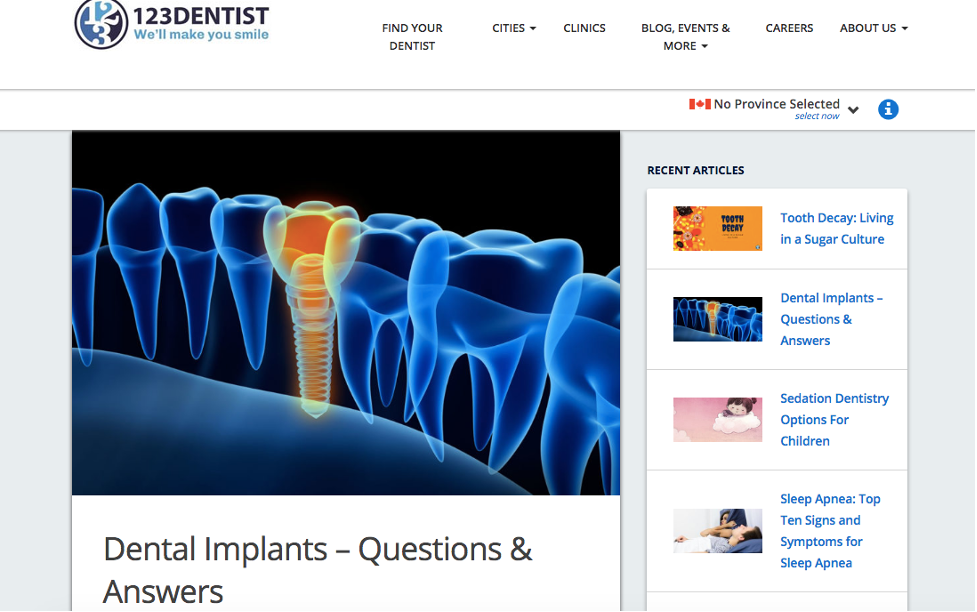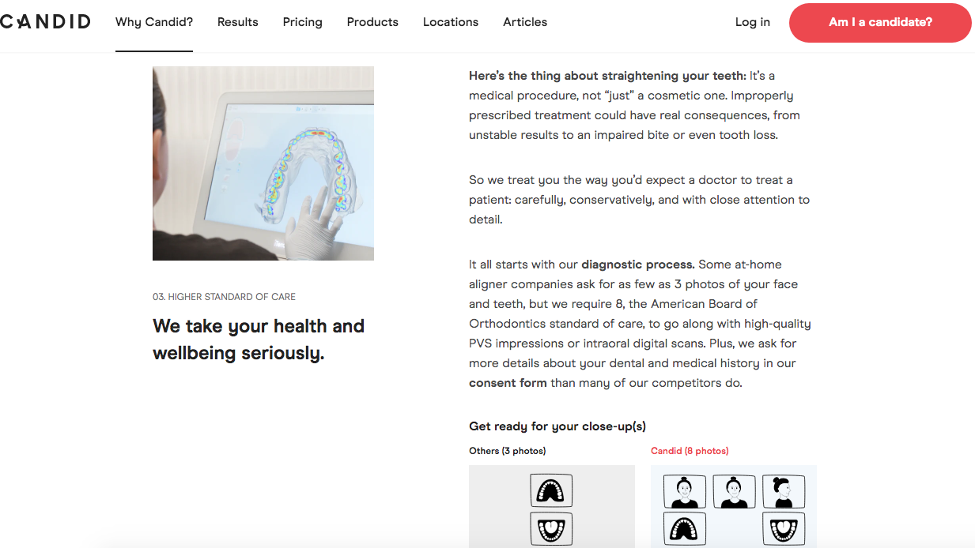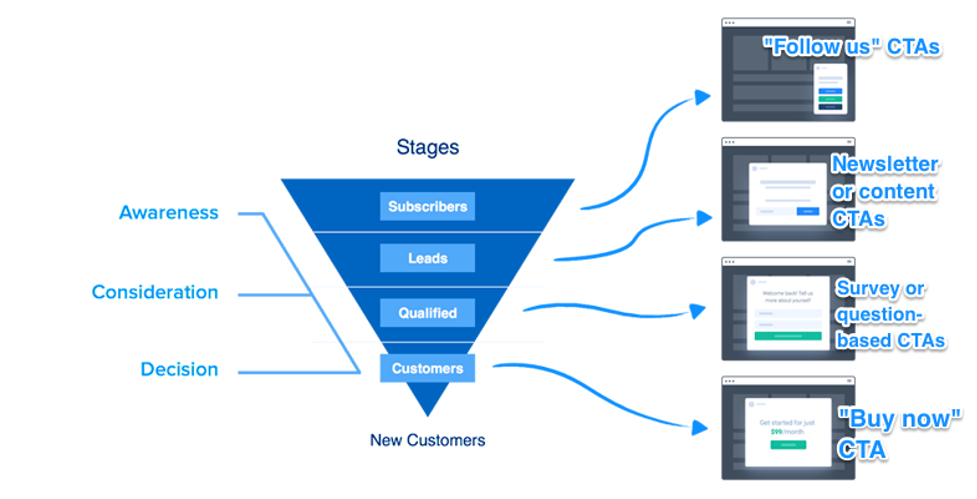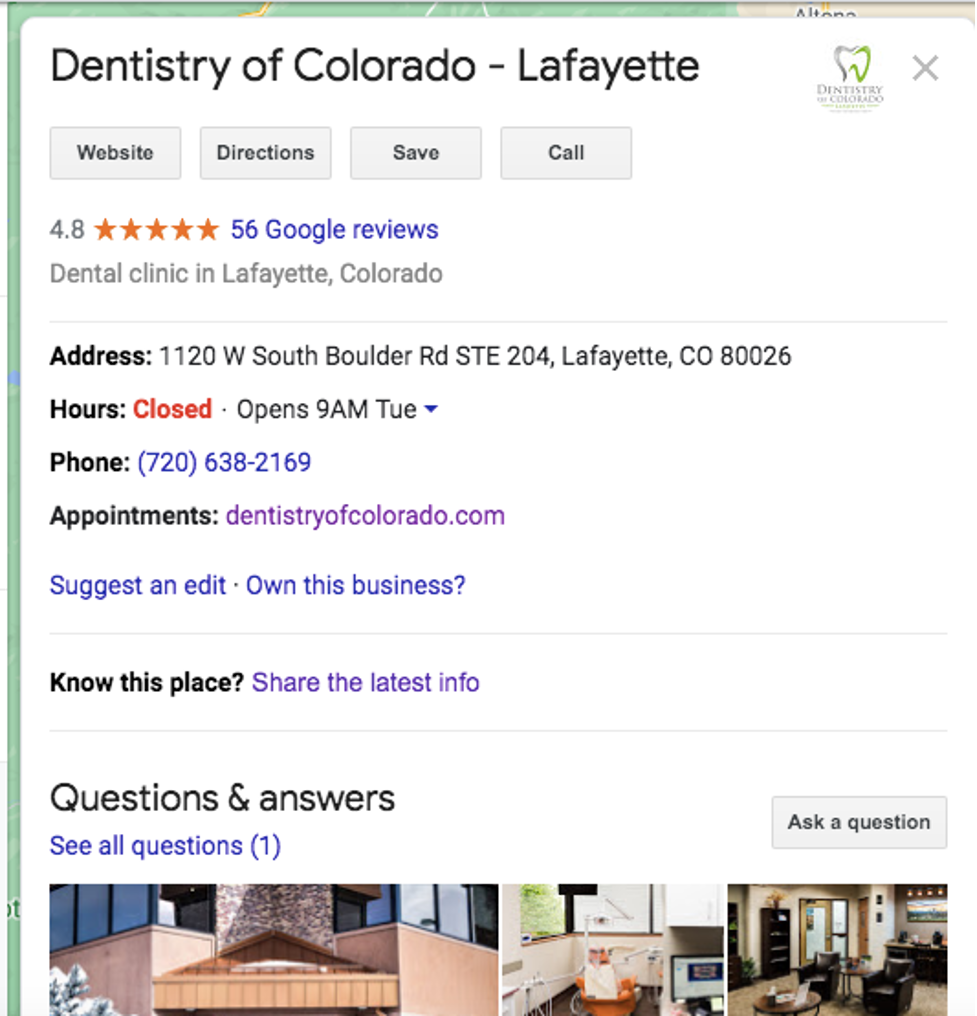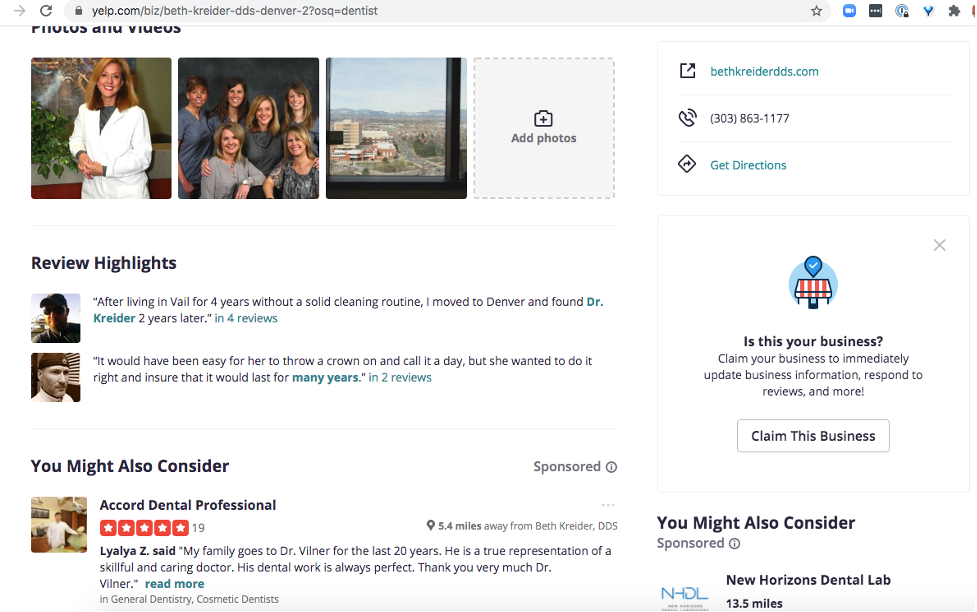According to HubSpot, nearly 80% of users ignore paid ads in search results.
This 2020 statistic gives a powerful glimpse into the sentiments of internet users today. Organic results, or unpaid search results, are winning in your prospective customers’ minds. That means it’s time to drill down into your dental SEO to capture their attention.
Doing dental search engine optimization (SEO) properly and successfully requires sustained focus on delivering valuable answers to search engines and searchers. How can you do this? Delivering a high-quality website experience and helpful content informed by questions that people who need dental care are asking will win them as patients.
Lay the essential groundwork for your website’s SEO potential
You may not think so today, but your website is your strongest marketing asset for your practice. These tips will arm you to build a strong foundation to expand your digital real estate and thereby tee up your dental SEO to be its most powerful.
1. Build an Archive of Content for Visitors
Plan for a minimum of 5 to 15 longer website pages fully built out to be found by searches. This is crucial to give search engines, not to mention prospective patients, sufficient context to know what your website is about and to give you a chance to start ranking. The first pages should focus on primary core business information, then span from there to cover the services you provide, answer questions about the services, and compare content to your competitors.
What pages should be included in this archive for launch?
- Services/product pages: It should be evident what the scope of your work looks like. These pages are a natural opportunity to target hyper-specific keywords, like “pediatric dentist in springfield, illinois,” “Invisalign dentist,” or “gum disease treatment.”
An in-depth product page about a common procedure like porcelain veneers, complete with lots of information on frequently asked questions, plus results and testimonials, is a worthwhile resource to host on your site:
- An “About us” page: This extends beyond a “meet the team” page. “About the practice” should cover your approach to dentistry, your mission statement with patients, and other particulars about why your practice is unique.
- Pricing or payment information: When it comes down to it, pricing is a big question on your patients’ minds. Supply a page to walk them through payment options and insurance providers you collaborate with.
- A handful of really informative articles: We’re not talking about wimpy posts that maybe hit 50-100 words. Start by creating five really valuable, long blog posts. Ideally, blog posts over 1,000 words that respond to your most frequently asked questions from prospective or current patients.
This blog post from 123Dentist talks about the success rate of dental implants, the healing time, the benefits, and the expected cost. It serves as a great example of what good optimized blog pages should look like in terms of length and comprehensiveness of topics:
After this initial archive of content is built, the next key step is to continue the cadence of publishing new content.
2. Regularly publish new content**
To continue feeding the search engines’ crawlers, you must publish new content regularly. The format of this new content to feed search engines is less important than having it be consistent. These could be new services pages, informative blog posts, or patient case studies.
To be clear, we’re not advocating for publishing content for content’s sake because we know you’re busy working full time as a dentist. But this new content on a regular clip is a “sign of life” to search engines that your website is relevant when you update it continuously.
A case study is a good example of a powerful piece of content to put out on at least a quarterly basis to garner interest from potential patients. It’s an incredible piece of sales collateral, sort of like a tricked-out testimonial, and showcases the results you created for patients:
The above example also does another thing particularly well. Namely, the red “Am I a candidate?” button. What’s so good about it? Casual visitors of this “Why Candid” testimonial have the next step clearly laid out to continue learning about Candid after learning about what makes their company approach different.
3. Gain new patients by making it easy for visitors to take action
That’s the purpose of a call to action, or CTA — to direct the casual website visitor to take further action on your website. In the example above, Candid makes it easy, even just from a quick glance, to know what a visitor should do next. In this case, it’s filling out a survey to qualify as a candidate.
These CTAs can either be designed, like Candid’s red button above. Or, they can be more understated as hyperlinks, like the CTAs at the bottom of 90210 Dentist’s blog post to either call the office or fill out the contact form:
The goal is the same: to engage the visitor with useful information and encourage them to take the next step of signaling their interest in your service. This step, collecting contact information, is essential to turn people who respond to your dental SEO efforts into leads and, hopefully, patients after that. Especially engaging forms of gated content can be free consultations, access to virtual tours of your office, or quotes for specific services.
This journey to becoming a customer, or patient, can be visually represented by a funnel with distinct stages. This diagram shows how you can use different types of CTAs at those different stages to keep them moving toward converting.
To maximize new patients from dental SEO through CTAs, follow these rules of thumb:
- Include one call-to-action per page. It is alarming how often this step gets overlooked.
- Limit to only a few possible CTAs on your website. Determine the stickiest ways your prospective patients typically get interested in your practice. Common examples are a “contact us” form, a form for pricing quotes for common services, a dental consultation, or a free office tour.
- Use action verbs as the CTA text to drive action. Clarity in what website visitors get in clicking on the CTA is table stakes. If put in their shoes, would you trade your contact information if you weren’t crystal clear on what you’re getting in return?
When you capture their contact information, you’ve successfully generated a lead and can follow up with them via email newsletters or outbound phone calls to keep your practice top of mind.
4. Use on-Page Dental SEO
To make each piece of content or website page as powerful as it can be for your dental SEO, you need to know the basics of on-page SEO. On-page SEO is building a page with as much useful content and metadata included to help search engines understand the topic of the page and determine relevance.
We could spend the rest of this post talking about on-page SEO, but we’ll share some recommendations to focus on. The most important part of on-page SEO is a descriptive, specific, and unique meta title or title tag. Think of it as the title on the front of a report — it's the first thing anyone will read so it has to describe the content of the page well.
Emphasize using headers to relate closely to this title tag and keep formatting top-of-mind while in your content management system for those scanning the content (bullet points, H1/H2s, etc), and include one CTA and a meta description per piece of content. From there, prioritize placing internal links on existing pages to the new article you've just created. It's also a good idea to include several contextual, relevant links out to other articles per piece of new content published.
5. Take advantage of external links + Link-building
Use external links to link to reputable sources of information, like new statistics or studies, to cite where you source your facts. Your site’s connectedness to other credible sources is a positive sign to search engines about your website’s quality.
Link-building is an SEO process to acquire links from other websites back to yours, to boost your domain authority, and therefore your dental website ranking. The tactics for it range from actively asking for links from other sites, all the way to earning links passively through writing high-quality content that other sites link to as trusted resources. Link-building will produce long-term benefits from your site, and can help boost dental SEO on a typically more expedited timeline than some other techniques.
Bonus: More “Techy” Considerations
There's more to dental SEO than just creating great content for your audience. The website needs to load fast, have a strong internal linking structure, and be easy to use on a smartphone. It doesn’t matter if you have the most dialed-in dental SEO practice if you also have a website that is functionally undermining all the informative, comprehensive content you’re putting so much work into. Without digging into all the technical details here, bring this list to your web developer or designer to investigate together.
Assess these technical considerations to ensure that your technical SEO is hitting its highest numbers:
- Increase page load speed. Page load speed is just as it sounds: how quickly your website loads on any device. The slower it loads (slower than four seconds is concerning), the bigger the knock to your SEO. PageSpeed Insights is a free tool you can use to check page speed and improve it.
- Make sure your website platform is well equipped for SEO (not all are!). This page details the most SEO-friendly website builders to make the switch.
- Ensure that your site is mobile-friendly. According to Statcounter, in October 2020 mobile devices in the U.S. (including tablets) are responsible for about 44% of total organic site visits. If your site isn’t responsive to mobile formats, you could be giving up close to half of your site visitors a bad experience, which doesn’t bode well for winning patients.
With some elbow grease and a little technical support, you’ll have the stable footing and strong website foundation to optimize your content moving forward for dental SEO.
Prioritize research for these three keyword types
Keyword research is the crucial fuel to power a successful dental SEO machine. For this machine to run efficiently as a patient acquisition machine, you need to focus on keywords regularly. Keyword optimization is not “set it and forget it.” It requires consistent iteration to capture more patients because the same exact keywords won’t apply to new searches for your business weeks, months, years into the future. However, proper keyword research done up front to identify your audience’s evergreen questions, and then integrated into good content, should stand up well for your website for a good amount of time, until your next keyword audit.
Comprehensive coverage of a topic is the key. The questions to ask are: 1) have I fully covered the topic, and 2) are there any sub-topics I can expand on or explain in more detail? Mastering keyword research itself is a whole topic on its own. Keyword research tools like SEMrush, Ahrefs, and Moz (and several more free tools) can help you find organic search opportunities.
It’s recommended that you set aside time at least monthly to conduct keyword research on the following types of keywords and make plans to naturally include them into your upcoming content — in titles, headers, and throughout the body content, at a base. Notably, you should not write a piece of content with search rankings as a goal without a primary keyword in mind first.
Branded keywords
Branded keywords are keywords that contain your brand or practice name in them. These are no-brainers to optimize for as your company should come up first when potential patients search for a dentist or practice by name.
Let’s imagine some examples of branded keywords for a fictitious dental practice called Stay Freshe Dentist, with Dr. Freshe as the owner:
Services keywords
Services keywords are keywords that contain services or products that your practice offers. These are the most common ways that searchers seek medical care, based on the service or product they’re interested in.
Examples for services keywords for a dental practice might be:
Long-tail Keywords
Long-tail keywords are a more targeted type of keyword. Long-tail terms have less search volume associated with them, but because the searcher is so specific with their request, they’re closer to deciding on a dentist to work with. As such, they’re valuable keywords to optimize for. Establishing credibility in long-tail keywords as a practice will go a long way toward converting more clients in the long run.
Examples for long-tail keywords for a dental practice might be:
Keep expanding your keyword footprint with keywords you’re focused on in your dental SEO content to pull in new types of patients.
Augment your local dental SEO presence
Profiles on Google My Business and Yelp both help hyper-local companies boost what’s called local SEO, or SEO that focuses specifically on the geographical aspects of your search, like placing it on a map. Local SEO is the lifeblood of health care providers, dental practices, restaurants, etc. It weighs into Google’s algorithm as its own section of organic results.
Pairing patient reviews with important information, like hours of operation and location, make local SEO listings a crucial piece of the decision for prospective patients. Interested in making the most of Google My Business and Yelp profiles for dental SEO? Read on.
Google My Business
Optimize and maintain your Google My Business profile or your business’s listing in Google. This includes your business contact information, reviews, and branding. To compare where your listing may be coming up short today, this is what a great one looks like:
What do you need to focus on to make your Google My Business listing great?
- Make sure your listed phone number, address, and geographical area are accurate and update promptly with any changes.
- Include a link to your website in the listing, and verify it is active and correct.
- Update office hours.
- Upload images of you, fellow employees, or the office itself. Give people a good idea of the experience they will get if they visit your office.
- Solicit honest reviews from existing patients to persuade potential patients to work with you.
After potential patients have their first interactions with your practice through your Google My Business profile, you’ll need to bring them to your website to capture their contact information. To do this, make sure to include your website link in your profile and use Google posts that feature links to helpful content to help educate visitors. Doing so will position you favorably, helping you foster leads and keep them warm as they head further down your inbound funnel.
Yelp
The same rationale of optimizing your company profile goes for Yelp, too. Yelp profiles tend to rank highly in search, which helps with dental SEO. This dentist’s Yelp profile serves as a prime example of what to do with clear ways to contact the practice, photos, and detailed reviews:
The same best practices from Google My Business apply for Yelp: provide a consistent business name, phone number, address, office hours, photos to increase engagement, and encourage existing patients to leave honest reviews.
Do aim to spread out reviews across platforms and keep GMB (#1 priority) and Yelp up to date in parallel. As we know, search engines love fresh, updated information.
Determine the effectiveness of your dental SEO through call tracking
Keep your finger on the pulse of what keywords your patients are searching to find dentists by surfacing Google My Business local SEO traffic up against all your other marketing channels so you can assess your marketing in one glance. CallRail’s Google My Business integration, available on Call Tracking Essential plan and higher, goes above and beyond what’s available in terms of analytics native to GMB for greater insights.
CallRail can help track with precision the source of a lead or patient. Are you confident that you know where your patients are coming from now? With CallRail’s call and form lead tracking, directly tie which pages, pieces of content, and CTAs are effective. From there, you’ll know without a doubt what marketing efforts are worth investing more in, and which are no longer serving your practice well. Soon you’ll be able to include dental SEO in with those that perform well for your practice.
How would you be able to prove these efforts are worth it if you didn’t have that tracking in the first place?



